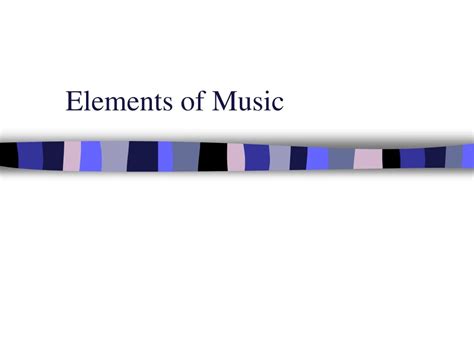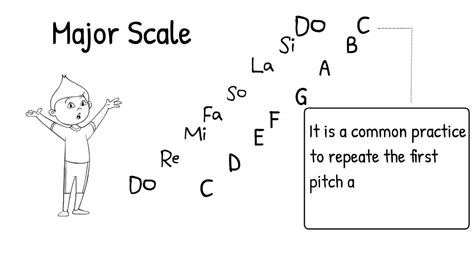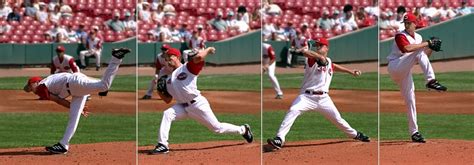The concept of a series of pitches is a fundamental aspect of various fields, including music, sales, and sports. In music, a series of pitches refers to a sequence of notes played in a specific order, creating a melody or harmony. In sales, a series of pitches involves presenting a product or service to potential customers, highlighting its features and benefits. In sports, particularly baseball, a series of pitches is a crucial part of the game, where a pitcher throws a sequence of balls to a batter, attempting to get them out. This article will delve into the world of series of pitches, exploring its significance, techniques, and applications in different domains.
Key Points
- The series of pitches is a crucial element in music, sales, and sports, requiring a deep understanding of the subject matter and the audience.
- In music, a series of pitches can create a melody or harmony, evoking emotions and conveying meaning.
- In sales, a series of pitches involves presenting a product or service, highlighting its features and benefits, and addressing customer concerns.
- In sports, a series of pitches is a critical part of the game, requiring strategy, skill, and physical ability.
- Effective communication, creativity, and adaptability are essential skills for delivering a successful series of pitches in any domain.
Musical Series of Pitches

In music, a series of pitches is the foundation of melody and harmony. Musicians use a variety of techniques, including melody, harmony, and rhythm, to create a cohesive and expressive sound. A series of pitches can evoke emotions, convey meaning, and create a sense of tension and resolution. Composers and musicians carefully craft their series of pitches to create a specific mood or atmosphere, using a range of instruments and vocal styles to convey their message. For example, a series of pitches in a musical composition might include a melody played by a solo instrument, followed by a harmonic progression played by a ensemble, and finally, a rhythmic pattern played by a percussion section.
Music Theory and Series of Pitches
Music theory provides a framework for understanding the series of pitches in music. The major and minor scales, chord progressions, and rhythmic patterns all contribute to the creation of a series of pitches. Musicians use music theory to analyze and compose music, ensuring that their series of pitches is coherent and effective. For instance, a musician might use the principles of harmony to create a series of pitches that resolve tension and create a sense of finality. The use of music theory in creating a series of pitches is essential, as it provides a structure and a language for musicians to communicate their ideas and emotions.
| Music Element | Series of Pitches |
|---|---|
| Melody | A sequence of single notes played in a specific order |
| Harmony | A combination of multiple pitches played simultaneously |
| Rhythm | A pattern of duration and accentuation of pitches |

Sales Series of Pitches

In sales, a series of pitches is a critical component of the sales process. Salespeople use a variety of techniques, including presentation, demonstration, and negotiation, to persuade potential customers to purchase their product or service. A series of pitches in sales involves presenting the features and benefits of a product or service, addressing customer concerns, and highlighting the value proposition. Effective salespeople tailor their series of pitches to their audience, using storytelling, examples, and data to make their case. For example, a salesperson might use a series of pitches to introduce a new product, demonstrate its features, and address customer concerns about price and quality.
Sales Strategy and Series of Pitches
Sales strategy plays a crucial role in the success of a series of pitches. Salespeople must understand their customer’s needs, preferences, and pain points to create a series of pitches that resonates with them. They use various sales techniques, such as the AIDA model (Attention, Interest, Desire, Action), to structure their series of pitches and guide the customer through the sales process. The use of sales strategy in creating a series of pitches is essential, as it provides a framework for salespeople to communicate their message and persuade their customers. By understanding the customer’s needs and preferences, salespeople can create a series of pitches that is tailored to their audience and increases the chances of a successful sale.
| Sales Element | Series of Pitches |
|---|---|
| Presentation | A introduction to the product or service |
| Demonstration | A showcase of the product or service's features and benefits |
| Negotiation | A discussion of price, terms, and conditions |
Sports Series of Pitches
In sports, particularly baseball, a series of pitches is a critical part of the game. Pitchers use a variety of techniques, including fastball, curveball, and changeup, to throw a sequence of balls to a batter, attempting to get them out. A series of pitches in sports requires strategy, skill, and physical ability, as pitchers must adapt to the batter’s strengths and weaknesses, as well as the game situation. Effective pitchers study the batter’s tendencies, adjust their series of pitches accordingly, and use their skills and experience to outmaneuver their opponent. For example, a pitcher might use a series of pitches to throw a fastball, followed by a curveball, and finally, a changeup, to keep the batter guessing and increase the chances of a strikeout.
Sports Strategy and Series of Pitches
Sports strategy plays a crucial role in the success of a series of pitches. Pitchers must understand the game situation, the batter’s strengths and weaknesses, and their own abilities to create a series of pitches that is effective. They use various strategies, such as reading the batter’s body language and adjusting their pitch selection accordingly, to outmaneuver their opponent. The use of sports strategy in creating a series of pitches is essential, as it provides a framework for pitchers to communicate their message and persuade their opponent. By understanding the game situation and the batter’s tendencies, pitchers can create a series of pitches that is tailored to their opponent and increases the chances of a successful outcome.
| Sports Element | Series of Pitches |
|---|---|
| Fastball | A pitch thrown at high speed, aiming for a strike |
| Curveball | A pitch thrown with spin, aiming to drop off the table |
| Changeup | A pitch thrown at a slower speed, aiming to deceive the batter |
What is the importance of a series of pitches in music?
+A series of pitches in music is essential for creating a melody or harmony, evoking emotions, and conveying meaning. It is the foundation of music composition and performance.
How do salespeople use a series of pitches to persuade customers?
+Salespeople use a series of pitches to present the features and benefits of a product or service, address customer concerns, and highlight the value proposition. They tailor their series of pitches to their audience, using storytelling, examples, and data to make their case.
What is the role of strategy in creating a series of pitches in sports?
+Sports strategy plays a crucial role in the success of a series of pitches. Pitchers must understand the game situation, the batter's strengths and weaknesses, and their own abilities to create a series of pitches that is effective. They use various strategies, such as reading the batter's body language and adjusting their pitch selection accordingly, to outmaneuver their opponent.
In conclusion, a series of pitches is a fundamental concept in music, sales, and sports, requiring a deep understanding of the subject matter and the audience. By understanding the principles of melody, harmony, and rhythm in music, the techniques of presentation, demonstration, and negotiation in sales, and the strategies of fastball, curveball, and changeup in sports, individuals can create a series of pitches that is effective and persuasive. Whether in music, sales, or sports, a series of pitches is a critical component of communication, persuasion, and success.
